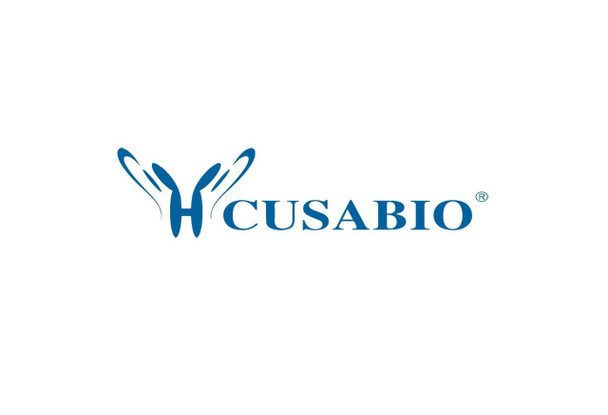Cusabio Human Recombinants
Recombinant Human Thioredoxin-interacting protein (TXNIP) | CSB-CF880966HUa6
- SKU:
- CSB-CF880966HUa6
- Availability:
- 3 - 7 Working Days
Description
Recombinant Human Thioredoxin-interacting protein (TXNIP) | CSB-CF880966HUa6 | Cusabio
Alternative Name(s): Thioredoxin-binding protein 2 Vitamin D3 up-regulated protein 1
Gene Names: TXNIP
Research Areas: Others
Organism: Homo sapiens (Human)
AA Sequence: MVMFKKIKSFEVVFNDPEKVYGSGEKVAGRVIVEVCEVTRVKAVRILACGVAKVLWMQGSQQCKQTSEYLRYEDTLLLEDQPTGENEMVIMRPGNKYEYKFGFELPQGPLGTSFKGKYGCVDYWVKAFLDRPSQPTQETKKNFEVVDLVDVNTPDLMAPVSAKKEKKVSCMFIPDGRVSVSARIDRKGFCEGDEISIHADFENTCSRIVVPKAAIVARHTYLANGQTKVLTQKLSSVRGNHIISGTCASWRGKSLRVQKIRPSILGCNILRVEYSLLIYVSVPGSKKVILDLPLVIGSRSGLSSRTSSMASRTSSEMSWVDLNIPDTPEAPPCYMDVIPEDHRLESPTTPLLDDMDGSQDSPIFMYAPEFKFMPPPTYTEVDPCILNNNVQ
Source: in vitro E.coli expression system
Tag Info: N-terminal 6xHis-B2M-tagged
Expression Region: 1-391aa
Sequence Info: Full Length
MW: 57.7 kDa
Purity: Greater than 90% as determined by SDS-PAGE.
Relevance: May act as an oxidative stress mediator by inhibiting thioredoxin activity or by limiting its bioavailability. Interacts with COPS5 and restores COPS5-induced suppression of CDKN1B stability, blocking the COPS5-mediated translocation of CDKN1B from the nucleus to the cytoplasm. Functions as a transcriptional repressor, possibly by acting as a bridge molecule between transcription factors and corepressor complexes, and over-expression will induce G0/G1 cell cycle arrest. Required for the maturation of natural killer cells. Acts as a suppressor of tumor cell growth. Inhibits the proteasomal degradation of DDIT4, and thereby contributes to the inhibition of the mammalian target of rapamycin complex 1 (mTORC1).
Reference: "Regulation of the bioavailability of thioredoxin in the lens by a specific thioredoxin-binding protein (TBP-2)."Liyanage N.P.M., Fernando M.R., Lou M.F.Exp. Eye Res. 85:270-279(2007)
Storage: The shelf life is related to many factors, storage state, buffer ingredients, storage temperature and the stability of the protein itself. Generally, the shelf life of liquid form is 6 months at -20?/-80?. The shelf life of lyophilized form is 12 months at -20?/-80?.
Notes: Repeated freezing and thawing is not recommended. Store working aliquots at 4? for up to one week.
Function: May act as an oxidative stress mediator by inhibiting thioredoxin activity or by limiting its bioavailability. Interacts with COPS5 and restores COPS5-induced suppression of CDKN1B stability, blocking the COPS5-mediated translocation of CDKN1B from the nucleus to the cytoplasm. Functions as a transcriptional repressor, possibly by acting as a bridge molecule between transcription factors and corepressor complexes, and over-expression will induce G0/G1 cell cycle arrest. Required for the maturation of natural killer cells. Acts as a suppressor of tumor cell growth. Inhibits the proteasomal degradation of DDIT4, and thereby contributes to the inhibition of the mammalian target of rapamycin complex 1 (mTORC1).
Involvement in disease:
Subcellular Location: Cytoplasm
Protein Families: Arrestin family
Tissue Specificity:
Paythway: InflammasomeSignaling
Form: Liquid or Lyophilized powder
Buffer: If the delivery form is liquid, the default storage buffer is Tris/PBS-based buffer, 5%-50% glycerol. If the delivery form is lyophilized powder, the buffer before lyophilization is Tris/PBS-based buffer, 6% Trehalose, pH 8.0.
Reconstitution: We recommend that this vial be briefly centrifuged prior to opening to bring the contents to the bottom. Please reconstitute protein in deionized sterile water to a concentration of 0.1-1.0 mg/mL.We recommend to add 5-50% of glycerol (final concentration) and aliquot for long-term storage at -20?/-80?. Our default final concentration of glycerol is 50%. Customers could use it as reference.
Uniprot ID: Q9H3M7
HGNC Database Link: HGNC
UniGene Database Link: UniGene
KEGG Database Link: KEGG
STRING Database Link: STRING
OMIM Database Link: OMIM









